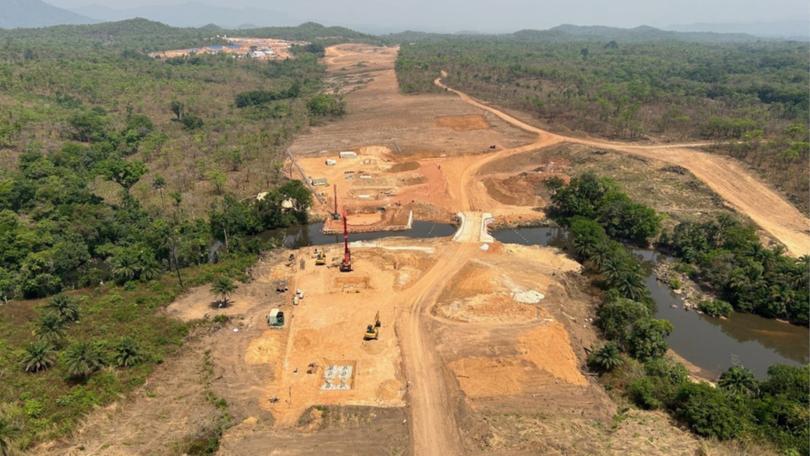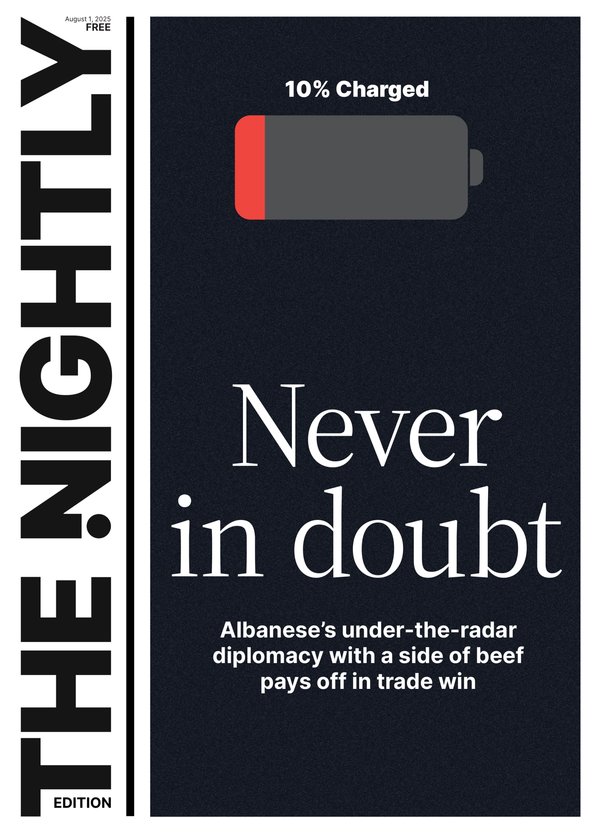Rio Tinto gets green light for $9.2b Simandou investment, while Pilbara robot train crash derails output

Rio Tinto has been given a clear runway to spend $US6.2 billion ($9.2b) on developing a mega West African iron ore hub that could dethrone the Pilbara’s supremacy.
Rio told investors on Tuesday that all conditions had now been satisfied for its investment to develop the high-grade Simandou iron ore deposit in Guinea, including obtaining the necessary Guinean and Chinese regulatory approvals.
By the start of January Rio had poured nearly $750m of the $9.2b into early works at Simandou.
Sign up to The Nightly's newsletters.
Get the first look at the digital newspaper, curated daily stories and breaking headlines delivered to your inbox.
By continuing you agree to our Terms and Privacy Policy.Simandou is set to export 120 million tonnes of iron ore a year at a high grade of around 65 per cent once 600km of railway and port facilities are built. The project also has a complex ownership structure.
Rio has a 53 per cent stake in the Simfer joint venture with Chinese metals giant Chinalco.
Simfer owns half of the overall Simandou project and the other half is owned by a consortium of Chinese and Singaporean companies. The Guinean Government holds an overarching 15 per cent stake across both halves of the project.
First production from the mine is slated for next year. The project has been dubbed the ‘Pilbara killer’ because Rio’s iron ore foray into Africa could spell long-term trouble for the Pilbara region’s mantle as the world’s premier producer of the steel-making input.
Rio on Tuesday also released quarterly production figures from its existing iron ore operations in the Pilbara.
A train collision on its Pilbara network in May lost nearly a week of rail capacity but the iron ore major was still able to achieve marginal increases in quarterly shipments.
Rio shipped 80.3 million tonnes of the steel-making ingredient in the three months to the end of July — up 3 per cent from the previous quarter — which took first half exports to 158.3 million tonnes.
That was 2 per cent shy of the total shipped a year earlier and implies an annualised run rate of just under 317 million tonnes a year — well off the lower end of its full-year target.
Production for the June quarter was 79.5mt — up 2 per cent from the previous three-month period but 2 per cent lower than a year earlier. That took output for the first half to 157.4mt — also off 2 per cent from a year earlier.
For the 2024 financial year Rio delivered 322.6mt.
A laden Rio train came off the tracks about 80km from Karratha on May 13 after smashing into stationary wagons that had workers nearby. The incident marked the mining giant’s third driverless train derailment in the Pilbara within the space of a year.
Rio on Tuesday said production and shipping in the quarter had been impacted by the collision, which resulted in around six days of lost rail capacity and full stockpiles at some mines.
But the miner has maintained full-year guidance of between 323 and 338mt. Production costs also remain unchanged at between $21.75 and $23.50 a tonne
It again warned export levels of its lower grade SP10 product are expected to remain higher until replacement projects are delivered, noting construction of its majority owned $3.1 billion Western Range mine is now 70 per cent complete.
